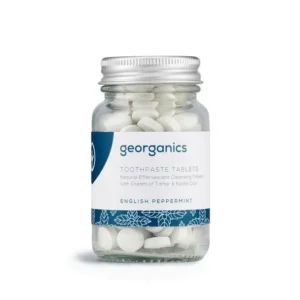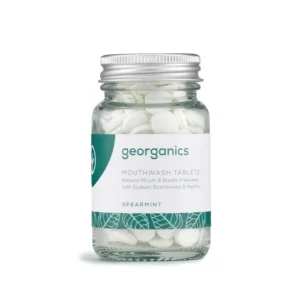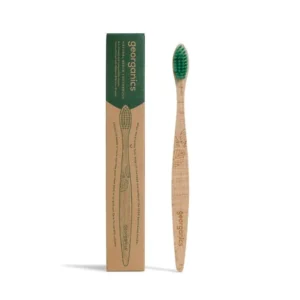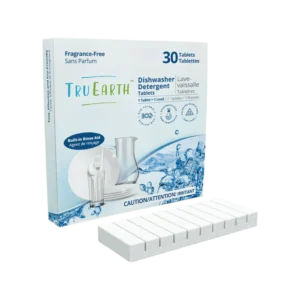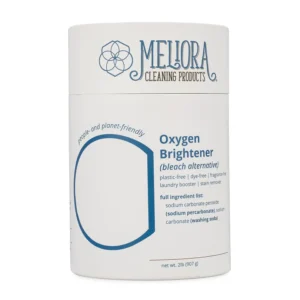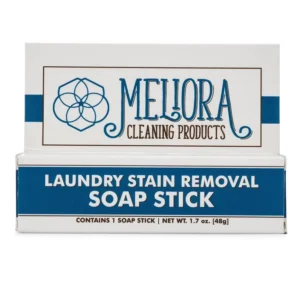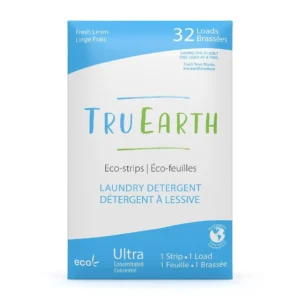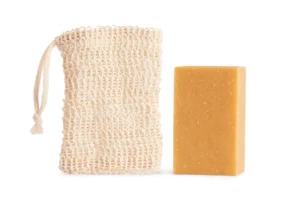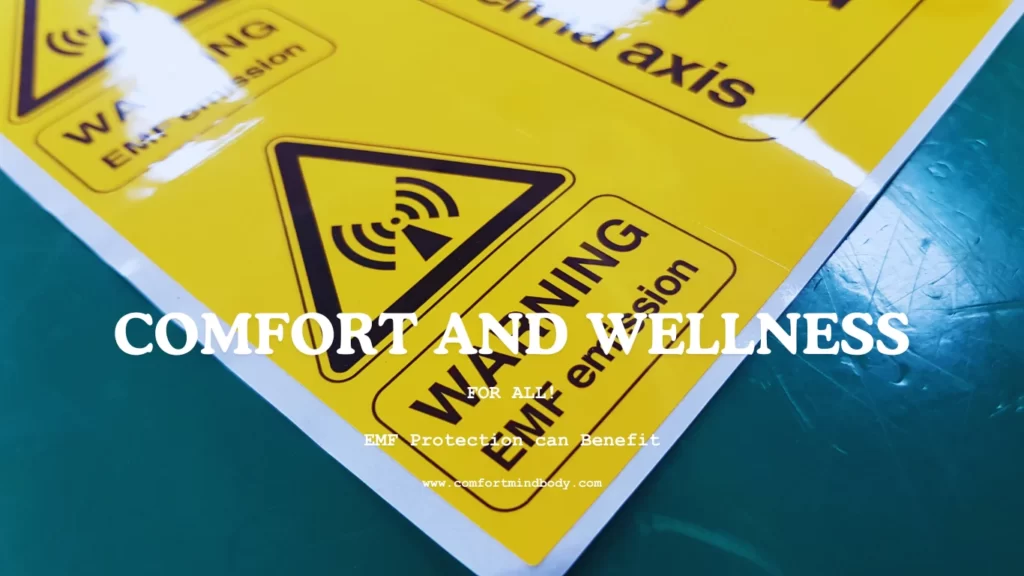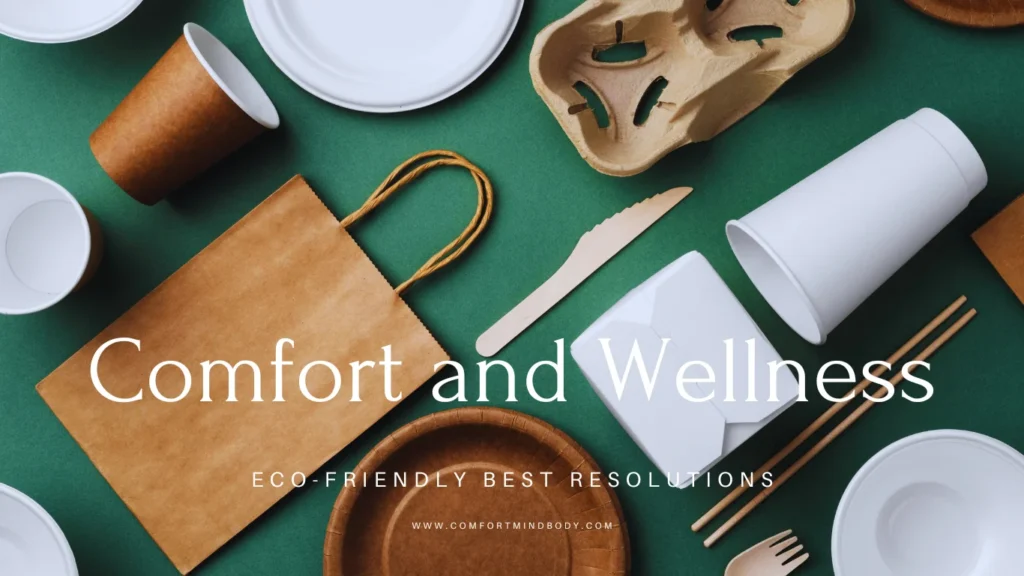Table of Contents
ToggleEco-Friendly Refillable Packaging Skin-care
In the realm of skincare, a new trend is emerging. It’s not about the latest miracle ingredient or revolutionary formula. It’s about Sustainable Packaging. More specifically, it’s about refillable skincare packaging.
This shift towards refillable packaging is driven by a growing awareness of the environmental impact of single-use containers. Every year, millions of skincare products are discarded, contributing to landfill waste and ocean pollution.
Refillable packaging offers a more sustainable solution. By reusing the same container, we can significantly reduce waste. But the benefits of refillable packaging extend beyond waste reduction.
Refillable packaging can also reduce our carbon footprint. It can contribute to a circular economy, where resources are reused and recycled, rather than discarded.
For businesses, refillable packaging can enhance brand loyalty and customer retention. It can also align with corporate social responsibility strategies and global sustainability goals.
For consumers, refillable packaging can be a way to make more ethical and environmentally friendly choices. It can also be a way to save money in the long run, as refills are often cheaper than buying new products.
However, the transition to refillable skincare packaging is not without challenges. There are considerations around convenience, hygiene, and cost. There are also regulatory considerations and the need for consumer education.
In this comprehensive guide, we will delve into the world of refillable skincare packaging. We will explore its benefits, challenges, and future trends. We will also provide practical tips for consumers and businesses looking to make the switch.
Join us on this journey towards a more sustainable future for skincare.
The Rise of Refillable Skincare Packaging
The skincare industry is undergoing a transformation. It’s a shift driven by consumer demand for more sustainable solutions. Refillable skincare packaging is at the forefront of this change. It’s a response to the growing awareness of the environmental impact of single-use packaging.
Every year, millions of skincare products are discarded after use. These products often come in plastic containers that end up in landfills or oceans. Refillable packaging offers a way to reduce this waste. Instead of discarding the container after use, it can be refilled with the same product.
This not only reduces waste but also conserves resources. It takes less energy and materials to produce a refill than a new product. The rise of refillable skincare packaging is also fueled by a shift in consumer attitudes. More and more consumers are seeking out brands that align with their values.
They are looking for brands that are committed to sustainability and environmental responsibility. Refillable packaging is a tangible way for brands to demonstrate this commitment.
Key Factor:
Here are some key factors driving the rise of refillable skincare packaging:
- Growing consumer awareness of environmental issues
- Increasing demand for sustainable skincare solutions
- The desire for brands to differentiate themselves in a competitive market
- The potential cost savings for consumers and businesses
- The alignment with global sustainability goals and corporate social responsibility strategies
The rise of refillable skincare packaging is a promising trend. But it’s just the beginning. As we will see in the following sections, there are many opportunities and challenges ahead.
Understanding the Environmental Impact of Skincare Packaging
The environmental impact of skincare packaging is significant. It’s a concern that extends beyond the visible waste we see in our trash bins. The production of skincare packaging involves the extraction of raw materials. This process often leads to habitat destruction and pollution.
Then, there’s the energy-intensive manufacturing process. It involves the use of fossil fuels, which contribute to greenhouse gas emissions. After the product is used, the packaging often ends up in landfills. Here, it can take hundreds of years to decompose.
Some packaging also ends up in our oceans. It contributes to the growing problem of plastic pollution, harming marine life and ecosystems.
The environmental impact of skincare packaging is not just a problem for the planet. It’s also a problem for us. The pollution from the production and disposal of packaging can affect our health and wellbeing.
Impact:
Here are some key environmental impacts of skincare packaging:
- Habitat destruction and pollution from raw material extraction
- Greenhouse gas emissions from energy-intensive manufacturing processes
- Waste accumulation in landfills and oceans
- Health and wellbeing impacts from pollution
Understanding the environmental impact of skincare packaging is the first step. The next step is to find ways to reduce this impact. One of the most promising solutions is refillable packaging.

SPF 30 Tinted Zinc Mineral Sunscreen Stick
Blends with a variety of skin tones to blur imperfections and provides broad-spectrum UVA/UVB protection with 80 minutes of water resistance.
Refillable vs. Single-Use: A Comparative Analysis
Sustainable Packaging
When it comes to skincare packaging, there are two main types: single-use and refillable. Each has its own set of advantages and disadvantages. Single-use packaging is the most common type. It’s convenient and often cheaper to produce. However, it’s also the main contributor to packaging waste.
Refillable packaging, on the other hand, is designed to be reused. After the product is finished, the container can be refilled with the same product. This reduces the amount of packaging waste produced. But how do these two types of packaging compare in terms of environmental impact? Let’s take a closer look:
- Material Use: Single-use packaging requires a new container for each product. This means more raw materials are used. Refillable packaging, on the other hand, uses the same container multiple times, reducing the need for new materials.
- Waste Production: Single-use packaging contributes to a significant amount of waste. Refillable packaging reduces this waste by reusing the same container.
- Energy Consumption: The production of single-use packaging requires more energy. This is because a new container must be produced for each product. Refillable packaging, on the other hand, requires less energy over its lifecycle.
- Carbon Footprint: The production and disposal of single-use packaging contribute to greenhouse gas emissions. Refillable packaging, by reducing material use and waste, can help lower these emissions.
While refillable packaging has clear environmental benefits, it’s not without challenges. These include higher upfront costs and the need for effective cleaning and refilling systems.
However, with growing consumer demand for sustainable solutions, the benefits of refillable packaging are becoming increasingly clear. It’s a key part of the shift towards a more sustainable skincare industry.
The Circular Economy and Refillable Skincare Packaging
Sustainable Packaging
The concept of a circular economy is gaining traction in various industries, including skincare. It’s a model that aims to eliminate waste and promote the continual use of resources.
Refillable skincare packaging fits perfectly into this model. It’s designed to be used, refilled, and reused, rather than being discarded after a single use. This reduces waste and extends the life of the packaging.
Here’s how refillable packaging contributes to the circular economy:
- Resource Efficiency: Refillable packaging uses fewer resources over its lifecycle. This is because the same container is used multiple times, reducing the need for new materials.
- Waste Reduction: By reusing the same container, refillable packaging significantly reduces waste. This is a key aspect of the circular economy, which aims to eliminate waste.
- Extended Product Life: Refillable packaging extends the life of the product container. Instead of being discarded after a single use, it’s used multiple times.
- Closed-Loop System: Refillable packaging can be part of a closed-loop system. This is where the packaging is returned to the manufacturer, refilled, and then sent back to the consumer.
However, for refillable packaging to contribute effectively to the circular economy, it needs to be designed for durability and ease of refill. It also requires effective systems for returning, refilling, and redistributing the packaging.
The shift towards a circular economy in the skincare industry is still in its early stages. But with the growing awareness of sustainability and the environmental impact of packaging waste, the role of refillable packaging is set to become increasingly important.
Refillable skincare packaging is not just a trend. It’s a key part of the shift towards a more sustainable and circular skincare industry.
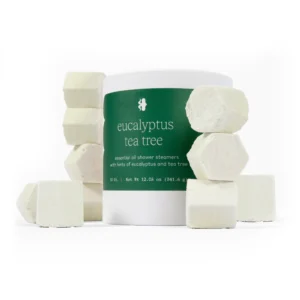
Eucalyptus shower steamer
- Free from plastic, palm oil and animal testing.
- Full of clean ethical ingredients!
- Good for daily shampooing or chemically treated hair.
Case Studies: Brands Leading the Way in Refillable Packaging
Several skincare brands have recognized the benefits of refillable packaging and are leading the way in its adoption. These brands are not only reducing their environmental impact but also setting an example for the rest of the industry.
One such brand is Kjaer Weis, a luxury organic cosmetics brand. They have adopted refillable packaging for their entire product range. The brand’s packaging is not only beautiful but also designed to last. Customers can easily replace the product pans, reducing waste and cost.
Another brand making strides in refillable packaging is REN Clean Skincare. They launched their first refillable product in 2020, a body wash with a 100% recycled plastic bottle. The brand aims to become zero waste by 2021, and refillable packaging is a key part of their strategy.
L’Occitane is another brand that has embraced refillable packaging. They offer refill pouches for many of their products, which use 65-90% less plastic than the original containers. The brand also has in-store refill stations for some of their products.
The Body Shop, a pioneer in ethical beauty, has also reintroduced refill stations in select stores. Customers can bring their clean, empty containers to be refilled with their favorite products. This initiative is part of the brand’s aim to reduce plastic waste.
Le Labo, a niche fragrance brand, also offers a refill service. Customers can bring their empty perfume bottles to any Le Labo store to be refilled, receiving a 20% discount in the process.
These brands show that refillable packaging is not only possible but also profitable. They are meeting consumer demand for more sustainable options, while also reducing their environmental impact.
However, it’s important to note that refillable packaging is not the only solution to the packaging waste problem. It needs to be part of a broader strategy that includes reducing packaging, using recycled materials, and improving recycling systems.
These case studies demonstrate the potential of refillable packaging in the skincare industry. They provide inspiration and lessons for other brands considering adopting refillable packaging.
The shift towards refillable skincare packaging is a positive step towards a more sustainable future. It’s a trend that is set to continue as more brands recognize the benefits and consumers demand more sustainable options.
Consumer Perceptions and Attitudes Towards Refillable Packaging
Sustainable Packaging
Consumer attitudes towards refillable packaging are a crucial factor in its adoption. Understanding these attitudes can help brands develop effective strategies to promote refillable packaging.
A growing number of consumers are becoming more environmentally conscious. They are aware of the environmental impact of their consumption habits and are looking for ways to reduce their carbon footprint. This includes seeking out skincare products with refillable packaging.
However, while many consumers express a desire for more sustainable options, there can be a gap between intention and action. This is often due to perceived barriers such as cost, convenience, and availability.
Here are some key findings from consumer surveys on attitudes towards refillable packaging:
- A majority of consumers are willing to pay more for products with sustainable packaging.
- Convenience is a significant factor in the adoption of refillable packaging. Consumers are more likely to choose refillable options if they are easy to use and refill.
- There is a high level of trust in brands that offer refillable packaging. Consumers perceive these brands as more environmentally responsible.
- Education plays a crucial role in consumer adoption of refillable packaging. Consumers need to understand the benefits and how to use and refill the packaging correctly.
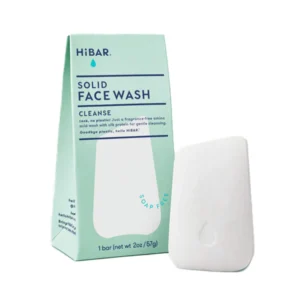
HiBAR - Face Wash Bars
With HiBAR, premium-quality face wash in solid form is provided, free from plastic waste and questionable ingredients. Choose a bar that’s gentle on your skin and the planet, and a cleaner, greener skincare routine can be embraced.
demand for refillable packaging
These findings suggest that while there is a demand for refillable packaging, brands need to address the barriers to its adoption. This includes making refillable options more accessible and affordable, and educating consumers on their use and benefits.
Social media and influencers can play a significant role in shaping consumer attitudes towards refillable packaging. They can help raise awareness, educate consumers, and promote the benefits of refillable packaging.
In conclusion, consumer attitudes towards refillable packaging are generally positive. However, there is still work to be done to bridge the gap between intention and action. Brands that can effectively address the barriers to adoption will be well-positioned to capitalize on the growing demand for refillable skincare packaging.
The Economics of Refillable Packaging for Businesses and Consumers
Sustainable Packaging
The economics of refillable packaging is a critical aspect to consider for both businesses and consumers. It’s not just about being environmentally friendly, but also about making financial sense.
For businesses, the initial investment in refillable packaging can be higher than single-use packaging. This is due to the cost of designing and producing durable containers that can withstand multiple uses. However, over time, refillable packaging can lead to cost savings.
Here are some ways businesses can save money with refillable packaging:
- Reduced packaging costs: Over time, the cost of refilling containers can be less than continually producing new ones.
- Increased customer loyalty: Customers who buy refillable products are likely to return for refills, leading to repeat business.
- Potential for premium pricing: Consumers are often willing to pay more for sustainable products, which can offset the initial investment in refillable packaging,
cost savings
For consumers, refillable packaging can also lead to cost savings. While the initial purchase of a refillable product may be more expensive, the cost of refills is typically less than buying a new product. Over time, this can result in significant savings.
However, it’s important to note that the economics of refillable packaging can vary depending on several factors. These include the type of product, the design and materials of the packaging, and the refill system in place.
In conclusion, while refillable packaging may require a higher initial investment, it can lead to cost savings in the long run. Both businesses and consumers can benefit economically from adopting refillable packaging. However, it’s essential to consider the specific circumstances and factors that can influence the economics of refillable packaging.
Innovations in Refillable Packaging Design and Materials
Sustainable Packaging
In the realm of refillable skincare packaging, innovation is key. It’s not just about creating a container that can be refilled, but also about designing a packaging system that is user-friendly, aesthetically pleasing, and sustainable.
One of the most significant innovations in refillable packaging is the use of sustainable materials. Traditional skincare packaging often relies on plastic, which can be harmful to the environment. However, many companies are now exploring alternatives.
Here are some innovative materials being used in refillable packaging:
- Glass: Durable and recyclable, glass is a popular choice for refillable packaging. It’s also non-reactive, making it safe for a variety of skincare products.
- Metal: Aluminum and stainless steel are both durable and recyclable. They can also be cleaned and sterilized easily, making them ideal for refillable packaging.
- Bioplastics: Made from renewable resources, bioplastics can be a more sustainable alternative to traditional plastics. Some bioplastics are also compostable.
innovative design
In addition to materials, design is also a crucial aspect of refillable packaging. The design needs to be functional, allowing for easy refilling and use. At the same time, it also needs to be attractive to consumers.
One innovative design approach is the use of modular systems. These systems allow for different parts of the packaging to be replaced or refilled, reducing waste. For example, a skincare brand might offer a refillable moisturizer container with a replaceable pump mechanism.
Another design innovation is the use of smart technology. Some companies are integrating technology into their refillable packaging to enhance the user experience. This could include QR codes for easy reordering of refills, or digital sensors that alert users when it’s time to refill.
In conclusion, innovations in refillable packaging design and materials are driving the industry forward. By exploring sustainable materials and user-friendly designs, companies can create refillable packaging that is not only good for the environment, but also appealing to consumers.
The Aesthetics of Refillable Packaging: Balancing Form and Function
Sustainable Packaging
The aesthetics of refillable skincare packaging play a crucial role in its success. It’s not enough for packaging to be functional and sustainable; it also needs to be visually appealing.
The design of refillable packaging often reflects the brand’s identity. Brands that prioritize sustainability may opt for minimalist designs that highlight the natural beauty of the materials used. On the other hand, luxury brands may choose more elaborate designs that convey a sense of exclusivity and sophistication.
The color, shape, and texture of the packaging can all contribute to its aesthetic appeal. For example, a sleek, cylindrical glass bottle with a metallic cap can convey a sense of elegance and simplicity. Meanwhile, a brightly colored, textured plastic container can evoke a sense of fun and playfulness.
However, aesthetics should not compromise functionality. The packaging should be easy to open, refill, and use. The size and shape should be practical for the product it contains and for the user’s lifestyle. For instance, a travel-sized refillable container should be compact and leak-proof.
In conclusion, the aesthetics of refillable skincare packaging is a delicate balance between form and function. By creating packaging that is both beautiful and practical, brands can encourage more consumers to make the switch to refillable products.
Convenience and Consumer Adoption of Refillable Packaging
Sustainable Packaging
Convenience is a key factor in consumer adoption of refillable skincare packaging. The process of refilling should be easy, quick, and hassle-free to encourage regular use.
Many brands are addressing this by offering in-store and online refill options. In-store refill stations allow consumers to bring their empty containers and refill them with their chosen product. This not only reduces packaging waste but also provides a unique, interactive shopping experience.
For online shoppers, brands may offer refill pouches that can be delivered to the consumer’s doorstep. These pouches use less plastic than traditional packaging and can be recycled after use. Some brands even provide pre-paid return envelopes so consumers can send back their empty pouches for recycling.
However, there are challenges to consider. For instance, hygiene is a concern with refillable packaging. Brands need to ensure that their refill systems are sanitary and that the product’s integrity is maintained throughout its lifecycle.
In conclusion, while convenience is a crucial factor in the adoption of refillable packaging, it’s equally important for brands to address potential challenges. By doing so, they can provide a seamless, enjoyable refill experience that encourages consumers to make more sustainable choices.
Regulatory Landscape and Certifications for Refillable Packaging
The regulatory landscape for refillable skincare packaging varies by region. In many countries, regulations focus on ensuring product safety and quality. This includes rules on hygiene, material safety, and product integrity.
For instance, in the European Union, the Cosmetic Products Regulation oversees all cosmetic products sold in the market. This includes refillable packaging. The regulation requires that all cosmetic products, including their packaging, do not harm human health when used under normal conditions.
In the United States, the Food and Drug Administration (FDA) regulates cosmetics under the Federal Food, Drug, and Cosmetic Act. While the FDA does not have specific regulations for refillable packaging, it does require that cosmetics and their packaging do not become contaminated or cause harm to consumers.
In addition to regulatory compliance, brands can also seek certifications to demonstrate their commitment to sustainability. These include:
- The Cradle to Cradle Certified™ Product Standard: This certification evaluates a product’s safety to humans and the environment, its design for future use cycles, and its manufacturing characteristics.
- The B Corporation Certification: This certification is for businesses that meet the highest standards of verified social and environmental performance, public transparency, and legal accountability to balance profit and purpose.
In conclusion, navigating the regulatory landscape and obtaining certifications can be complex. However, it’s a crucial part of implementing refillable packaging. By doing so, brands can ensure their products are safe, compliant, and recognized for their sustainability efforts.
The Brand Perspective: Marketing and Communicating Refillable Packaging
Sustainable Packaging
From a brand’s perspective, refillable skincare packaging presents a unique opportunity. It allows brands to align themselves with the growing consumer demand for sustainable solutions. However, effectively marketing and communicating the benefits of refillable packaging is crucial.
Firstly, brands need to clearly communicate the environmental benefits of refillable packaging. This includes explaining how it reduces waste, lowers carbon footprint, and contributes to a circular economy. Brands can use infographics, videos, and other visual content to make this information easily digestible.
Secondly, brands should highlight the cost savings associated with refillable packaging. While the initial purchase may be more expensive, refills often cost less than buying a new product. This can be an attractive selling point for budget-conscious consumers.
Thirdly, brands can leverage the aesthetic appeal of refillable packaging. Many refillable containers are designed to be stylish and luxurious, adding a touch of elegance to consumers’ skincare routines. Brands can showcase these designs in their marketing materials to attract consumers who value aesthetics.
Moreover, brands should also address potential concerns consumers may have about refillable packaging. This includes explaining how to clean and maintain the containers, and assuring consumers about the product’s safety and hygiene.
Brands can also use storytelling to connect with consumers on a deeper level. They can share the story behind their decision to switch to refillable packaging, the challenges they overcame, and their vision for a sustainable future.
Finally, brands should consider partnering with influencers and thought leaders in the sustainability space. These individuals can help amplify the brand’s message and reach a wider audience.
In conclusion, marketing and communicating refillable packaging requires a strategic approach. Brands need to highlight the environmental, economic, and aesthetic benefits, address consumer concerns, and use storytelling to create an emotional connection. By doing so, they can drive consumer adoption of refillable packaging and position themselves as leaders in sustainability.
Overcoming Challenges: Barriers to Refillable Packaging Adoption
Sustainable Packaging
Despite the numerous benefits, there are still several barriers to the widespread adoption of refillable skincare packaging. Understanding these challenges is the first step towards overcoming them.
One of the main barriers is the initial cost. Refillable containers are often more expensive than single-use packaging due to the higher quality materials used. This can deter cost-conscious consumers, despite the long-term savings from buying refills.
Another challenge is the convenience factor. Consumers are used to the ease of single-use packaging and may find the process of refilling containers cumbersome. Brands need to ensure that the refill process is as easy and convenient as possible to encourage adoption.
Hygiene concerns also pose a barrier. Consumers may worry about the cleanliness of refillable containers, especially if they are not cleaned properly. Brands need to provide clear instructions on how to clean and maintain the containers to alleviate these concerns.
There are also regulatory challenges to consider. Different countries have different regulations regarding packaging, and refillable containers may not be allowed in some markets. Brands need to navigate these regulations to ensure their refillable packaging is compliant.
challenges
The list of challenges includes:
- High initial cost
- Convenience factor
- Hygiene concerns
- Regulatory challenges
Despite these challenges, many brands are successfully implementing refillable packaging solutions. They are finding innovative ways to make the refill process convenient, addressing hygiene concerns, and navigating regulatory hurdles. By doing so, they are paving the way for a more sustainable future in the skincare industry.
In conclusion, while there are barriers to the adoption of refillable skincare packaging, they are not insurmountable. With innovation, education, and a commitment to sustainability, brands can overcome these challenges and lead the way towards a more sustainable future.
Maintaining and Cleaning Refillable Containers
Sustainable Packaging
Proper maintenance and cleaning of refillable containers are crucial to ensure their longevity and hygiene. This is especially important for skincare products, which can be sensitive to contamination.
The first step in maintaining refillable containers is to clean them regularly. This can be done by rinsing the container with warm water and a mild soap. It’s important to ensure that all product residue is removed to prevent buildup and potential bacterial growth.
Next, the container should be dried thoroughly. Any moisture left in the container can lead to mold growth, which can contaminate the product. It’s best to air dry the container upside down to allow any remaining water to drain out.
For containers that come into direct contact with the product, such as pumps or droppers, extra care should be taken. These parts should be disassembled if possible and cleaned separately to ensure all product residue is removed.
proper maintenance
Here are the steps to clean refillable containers:
- Rinse the container with warm water and mild soap.
- Ensure all product residue is removed.
- Dry the container thoroughly.
- Disassemble and clean parts that come into direct contact with the product.
By following these steps, consumers can ensure their refillable containers are clean and ready for the next refill. This not only maintains the quality of the skincare product but also extends the lifespan of the container, contributing to a more sustainable skincare routine.
In conclusion, proper maintenance and cleaning of refillable containers are essential for their effective use. By educating consumers on these practices, brands can promote the adoption of refillable packaging and contribute to a more sustainable skincare industry.
The Future of Refillable Skincare Packaging: Trends and Predictions
Sustainable Packaging
As we look towards the future, refillable skincare packaging is set to play a significant role in the beauty industry’s sustainability efforts. Several trends and predictions indicate a promising trajectory for this eco-friendly packaging solution.
One key trend is the increasing consumer demand for sustainable products. As more people become aware of the environmental impact of their consumption habits, they are seeking out brands that align with their values. This includes a preference for refillable packaging, which reduces waste and promotes a circular economy.
Another trend is the rise of technology in enhancing the refillable packaging experience. From smart packaging that alerts users when it’s time for a refill, to online platforms that make the refill process seamless, technology is set to revolutionize the way we use and refill our skincare products.
trends and predictions
Here are some trends and predictions for the future of refillable skincare packaging:
- Increasing consumer demand for sustainable products.
- The rise of technology in enhancing the refillable packaging experience.
- Greater emphasis on design and aesthetics in refillable packaging.
- More brands offering refillable options for their products.
- Regulatory changes promoting the use of sustainable packaging.
In addition to these trends, we can also expect to see a greater emphasis on design and aesthetics in refillable packaging. As brands strive to make their refillable options as attractive as possible, we can expect to see innovative designs that are not only functional but also visually appealing.
Furthermore, as the benefits of refillable packaging become more widely recognized, more brands are likely to offer refillable options for their products. This will increase the availability of refillable skincare products, making it easier for consumers to make sustainable choices.
Lastly, regulatory changes are also likely to influence the future of refillable packaging. As governments around the world implement policies to reduce plastic waste, there may be incentives for brands to adopt sustainable packaging solutions, including refillable options.
Conclusion: Sustainable Packaging Future
Sustainable Packaging
As we’ve explored throughout this article, refillable skincare packaging offers a viable and effective solution to the environmental challenges posed by traditional single-use packaging. It’s clear that embracing refillable packaging is not just a trend, but a necessary step towards a more sustainable future.
The benefits of refillable packaging extend beyond environmental impact. For consumers, it offers a way to align their skincare routines with their values, supporting brands that prioritize sustainability. For businesses, it presents an opportunity to meet consumer demand, differentiate their offerings, and contribute to a circular economy.
However, the transition to refillable packaging is not without its challenges. It requires a shift in consumer behavior, investment in design and technology, and a commitment to continuous improvement. But as we’ve seen, these challenges are not insurmountable. With innovation, education, and collaboration, we can overcome these barriers and make refillable skincare packaging the norm.
In conclusion, refillable skincare packaging represents a significant opportunity to reduce waste, conserve resources, and create a more sustainable beauty industry. By embracing this solution, we can all play a part in creating a more sustainable future.
Appendix: Tips for Transitioning to Refillable Skincare Products
Transitioning to refillable skincare products can seem daunting, but it doesn’t have to be. With a little planning and a few simple steps, you can make the switch smoothly and effectively. Here are some tips to help you get started.
- Start Small: You don’t have to overhaul your entire skincare routine at once. Start by replacing one or two products with refillable alternatives. This will allow you to gradually adjust to the new system without feeling overwhelmed.
- Do Your Research: Not all refillable products are created equal. Take the time to research different brands and products. Look for companies that prioritize sustainability and offer high-quality, effective products in refillable packaging.
- Consider the Whole Lifecycle: When choosing refillable products, consider the entire lifecycle of the packaging. This includes the materials used, the refill process, and the end-of-life disposal. The most sustainable options are those that minimize waste at every stage.
- Maintain Your Containers: Refillable containers are designed to last, but they still require care. Follow the manufacturer’s instructions for cleaning and maintenance to ensure your containers stay in good condition for as long as possible.
- Spread the Word: Once you’ve made the switch, share your experience with others. Your friends, family, and social media followers might be inspired to make the switch too.
Remember, every small change contributes to a larger impact. By choosing refillable skincare products, you’re taking a step towards a more sustainable lifestyle and helping to create a more sustainable beauty industry.
References and Further Reading
Sustainable Packaging
For those interested in delving deeper into the topic of refillable skincare packaging, there are numerous resources available. Academic articles, industry reports, and sustainability blogs offer a wealth of information on the latest trends, innovations, and research in this field.
In addition, many skincare brands and packaging companies provide detailed information on their sustainability initiatives, including their use of refillable packaging. By staying informed and continuing to learn, we can all contribute to the growth and success of sustainable practices in the skincare industry.

